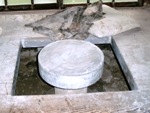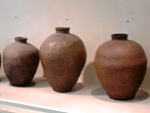Ceramics, a mixture of cultures on earth
Seeing the whole history of Japanese ceramics, we can say that while ceramics are definitely a part of traditional Japanese culture, at the same time they are mixture of global cultures.

Some very common techniques such as the wheel and kiln were brought from Korea, as well as the techniques to make porcelain, which is now very common in Japanese ceramics.
In addition, typical painting for Imari ware which is now widely recognized as traditional decoration for Imari originated in Jingdezhen. It is said that Chinese pottery artists came from China to Japan and had a great influence on the techniques of pottery painting. It can be said that Japanese ceramics have been affected by Korea and China, but it is also true that Japanese ceramics were exported to Europe and had an immense effect on European pottery. One of the most royal ceramics in Germany, Meissen, is a good example. During the Edo era, Japan exported ceramics from Imari to Europe, mainly targeting royalty. The pottery artists in Imari used flamboyant pottery decoration since ceramics were used to as a room decoration. The wide acceptance of Imari in Europe led to an influence in paintings. In this manner, Japanese ceramics affected Western countries. People in Japan now use and enjoy such Western famous pottery as Wedgwood, Royal Dolton, and Minton which have been adopted by contemporary Japanese culture.
Seen from a global view, although Japanese ceramics has retained its original identity, it has developed by accepting international cultural influences. Many different cultures affected each other and has been formed into Japanese ceramics.

Looking at each Japanese ceramic type, it is interesting to see the history, political situations and the lifestyles of people through ceramics. For example, consider Shigaraki ware which is famous for raccoon dog statues. Its earthy and rustic look are a testament to its historical and cultural background. In the 8th century, Shigaraki ware started as pieces of roof tiles used for Shigaraki palace. The Shoumu Emperor built this palace for a great statue of the Buddha. Moving to the 14th century, people identified the spirit of ‘Tea cult’ with the simplicity and rusticity of Shigaraki, and preferred to use them as tea utensils. Even today, Shigaraki ware uses the traditional technique of Yakishime, a way to fire the work without using glaze.
In contrast, a most gorgeous ceramic example is Imari. From its beginnings as an imitation of the Chinese school of painting, it flourished under the influence of Kakiemon, and came to be exported as a ceramic to Europe. The bright colors of the Imari ceramics were suited to the tastes of the royal families in late baroque period. Knowing the history and stories hiding behind each ceramics will give you a new understanding of Japanese ceramics.
